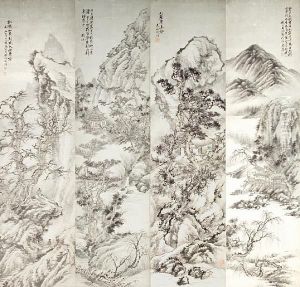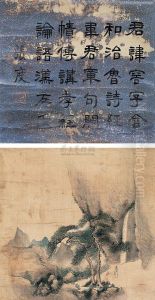Zhang Du Paintings
Zhang Du was a significant figure in the late Ming Dynasty, an era marked by considerable cultural, social, and political changes in China. Born in 1577, Zhang Du's life and career were set against a backdrop of tumultuous events, including the decline of the Ming Dynasty and the transition to the Qing Dynasty. Despite the challenges of his time, Zhang Du managed to carve out a notable career as a scholar-official, a path that was both prestigious and fraught with the complexities of imperial service.
Zhang Du's contributions to Chinese literature and historiography are particularly noteworthy. He was deeply involved in the intellectual debates of his time, contributing to the rich tapestry of Ming Dynasty thought. His works often reflected the concerns of his era, grappling with issues of governance, ethics, and historical interpretation. Zhang Du was not just a passive observer of his times; he was an active participant in the literary and philosophical conversations that shaped the intellectual landscape of late Ming China.
His tenure as an official was marked by the same dedication and insight he brought to his scholarly work. Zhang Du served in various capacities within the Ming government, where he was known for his integrity and for advocating policies he believed were in the best interests of the state and its people. However, like many officials of the time, Zhang Du's career was subject to the vicissitudes of court politics and the complexities of serving under an increasingly beleaguered dynasty.
After his death in 1641, Zhang Du's legacy continued to influence Chinese thought and literature. His works were studied by later generations, who saw in them not only the intellectual rigor of Ming scholarship but also a reflection of the challenges and aspirations of his time. Zhang Du remains a figure of interest for historians and scholars of Chinese literature, representing the depth and diversity of Ming Dynasty intellectual life.

